2021 Live Review 4 | AP Physics C: Mechanics | Everything You Need to Know about Nonlinear Springs
TLDRThis AP Live Review session for Physics C Mechanics delves into non-linear springs, exploring their behavior and calculations beyond Hooke's Law. The instructor explains how to calculate work done on non-linear springs using calculus, emphasizing the energy and momentum conservation principles. The session includes examples from past exams, highlighting the importance of understanding the deviations in energy storage and oscillation periods in non-linear systems. The review also covers the concept of linearization to simplify non-linear problems and encourages students to practice with previous free-response questions for a deeper understanding.
Takeaways
- 📚 The session covers non-linear springs and their behavior in contrast to Hooke's Law for elastic springs, emphasizing the need for calculus to calculate work done in non-linear springs.
- 🔍 The video provides resources for further study, including a link to a Google Drive folder with materials and the College Board's AP YouTube channel for additional content.
- 🔧 The importance of understanding the difference between linear and non-linear springs is highlighted, with non-linear springs not being simple harmonic oscillators and thus having different energy storage and oscillation periods.
- 📉 The concept of calculating work done on a spring is explained using the area under the force-displacement graph, which is a fundamental principle extended to non-linear springs through calculus.
- 📚 The session includes examples of free response and multiple-choice questions from past AP exams, illustrating how to approach problems involving non-linear springs.
- 📝 The process of linearization is introduced as a method to deal with non-linear data, transforming it into a linear form that can be easily analyzed and graphed.
- 📈 Emphasis is placed on the importance of units and significant figures in calculations, as well as the correct labeling of axes when graphing data.
- 📐 The video demonstrates how to find the spring constant 'a' from a graph by calculating the slope of the best-fit line in a linearized force-displacement graph.
- 🚀 The application of conservation of energy and momentum principles is shown in solving problems, such as determining the speed of blocks after a collision and the potential energy stored in a spring.
- 🔄 The difference between simple harmonic motion and the motion of a system with a non-linear spring is discussed, noting that the latter does not exhibit simple harmonic motion due to the cubic force-displacement relationship.
- 🔑 The video concludes with a reminder of the importance of practicing with past exam questions and understanding fundamental physics concepts to succeed in the AP Physics C Mechanics exam.
Q & A
What is the main topic discussed in the video script?
-The main topic discussed in the video script is the behavior of non-linear springs, specifically in the context of physics, focusing on how to calculate work done, energy, and other related concepts when springs do not follow Hooke's Law.
Why is calculus necessary when dealing with non-linear springs?
-Calculus is necessary when dealing with non-linear springs because the relationship between force and displacement is not linear, and thus, the work done to compress or stretch the spring cannot be calculated using simple geometric shapes but requires integration.
What is the significance of the equation sheet provided in the script?
-The equation sheet is provided to assist students in solving problems related to non-linear springs, as it contains essential formulas and equations that are used throughout the session.
Why are non-linear springs not considered simple harmonic oscillators?
-Non-linear springs are not considered simple harmonic oscillators because their force-displacement relationship deviates from the linear relationship (F = -kx), leading to changes in energy storage and oscillation period that are not observed in simple harmonic motion.
What is the purpose of the multiple choice question from the 2004 exam discussed in the script?
-The purpose of discussing the multiple choice question from the 2004 exam is to illustrate how to calculate the work done to stretch a non-linear spring using calculus and to emphasize the concept of work as the area under the force-displacement curve.
How is the potential energy of a spring calculated when it is not linear?
-The potential energy of a non-linear spring is calculated by integrating the force with respect to displacement from the equilibrium position to the desired amplitude, using the specific force-displacement relationship of the non-linear spring.
What is the role of the free response question from the 1986 exam in the script?
-The free response question from the 1986 exam is used to demonstrate how to find the potential energy stored in a cubic spring, calculate the maximum speed of a mass attached to the spring, and understand how the amplitude and period of oscillation are affected by the non-linearity of the spring.
Why is it important to understand the conservation of energy and momentum in the context of non-linear springs?
-Understanding the conservation of energy and momentum is crucial because these principles apply regardless of whether the spring is linear or non-linear, and they provide a fundamental basis for solving problems involving the dynamics of springs.
What is the concept of linearization as it relates to non-linear springs?
-Linearization is the process of transforming a non-linear relationship into a linear one by applying mathematical transformations, such as squaring the displacement in the case of a force-displacement relationship that is quadratic, to make the data fit a straight line and simplify calculations.
How can previous exam questions and scoring rubrics from AP Central be beneficial for students preparing for the AP Physics C Mechanics exam?
-Previous exam questions and scoring rubrics from AP Central provide students with valuable practice material and insights into how to approach problem-solving and what is expected in terms of answers, which can help them better prepare for the exam.
Outlines
🔍 Introduction to Non-Linear Springs in Physics
The video begins with an introduction to the topic of non-linear springs, contrasting them with the more familiar Hooke's law for elastic springs. The instructor outlines the session's logistics, including the recording of the session for future review and the availability of materials at a provided URL. The main focus is on calculating work done to compress or stretch a non-linear spring, which requires the use of calculus. The instructor emphasizes that non-linear springs are not simple harmonic oscillators, leading to deviations in stored energy and oscillation period. Examples of free response and multiple-choice questions from past exams are promised to illustrate the concepts.
📚 Calculating Work and Energy for Non-Linear Springs
In this segment, the instructor delves into the specifics of calculating work done on a non-linear spring, using a 1986 exam question as an example. The spring's force-displacement relationship is cubic, and the goal is to find the potential energy stored and the maximum speed that a mass attached to the spring could achieve. The process involves using calculus to integrate the force function and equating potential and kinetic energy to solve for velocity. The instructor also discusses how to handle changes in amplitude for non-linear springs and the implications for oscillation periods.
📉 Analyzing the Effects of Non-Linearity on Oscillation
The instructor continues the discussion on non-linear springs, focusing on how non-linearity affects the amplitude and period of oscillation. Using a multiple-choice question from a past exam, the concept of energy conservation is applied to determine the displacement at which potential and kinetic energies are equal. The segment also touches on the acceleration of an object attached to a non-linear spring, explaining why the period of oscillation will decrease due to the increased acceleration as the object moves back towards equilibrium.
📈 Linearization of Non-Linear Data
This part of the video addresses the concept of linearization when dealing with non-linear springs. The instructor uses a 2006 exam question to demonstrate how to transform a non-linear force-displacement relationship into a linear one by squaring the displacement values. The process involves graphing force against the square of displacement, finding the slope of the best-fit line, and using this to calculate work and speed. The importance of units and significant figures in calculations is also highlighted.
🚀 Work-Energy Principle in Non-Linear Spring Dynamics
The focus shifts to applying the work-energy theorem to a scenario involving a cart and a non-linear spring. The instructor explains how to calculate the work done by the cart to compress the spring and how this work translates into kinetic energy. The problem involves determining the speed of the cart before it compresses the spring and the amount of work done during compression, emphasizing the conservation of energy throughout the process.
💥 Collision and Compression with Non-Linear Springs
In this section, the video script describes a collision problem involving two blocks and a non-linear spring. The instructor guides the viewer through drawing a free body diagram, applying the conservation of momentum to find the velocity of the blocks after the collision, and using the work-energy principle to calculate the maximum compression distance of the spring. The complexity of the problem is managed by breaking it down into smaller, manageable parts.
🔄 Post-Collision Dynamics of Non-Linear Springs
The final part of the script deals with the dynamics following a collision involving a non-linear spring. The instructor explains how to determine the net force on one of the blocks when the spring is at maximum compression and the magnitude of the force on each block. The segment concludes with a discussion on whether the system will exhibit simple harmonic motion, which is not the case for non-linear springs due to the cubic force-displacement relationship.
🎓 Conclusion and Study Tips for Physics C Mechanics
The video concludes with a summary of key takeaways, emphasizing the importance of understanding work calculations for non-linear springs, the conservation of energy and momentum, and the distinction between linear and non-linear springs in terms of harmonic motion. The instructor encourages students to practice with past exam questions and provides a link for feedback. The session ends with a reminder of upcoming review topics and a motivational note to help students aim for a top score.
Mindmap
Keywords
💡Hooke's Law
💡Elastic Springs
💡Non-linear Springs
💡Simple Harmonic Motion
💡Work
💡Calculus
💡Potential Energy
💡Conservation of Energy
💡Free Response Questions
💡Linearization
💡Oscillation
Highlights
Hooke's Law and simple harmonic motion are fundamental concepts, but non-linear springs are the focus of this session.
The session is recorded and will be available for review on the AP Classroom and the College Board's AP YouTube channel.
Materials for the session, including the Physics C equation sheet and free-response questions, are provided through a tiny URL.
Calculus is necessary for calculating work done to compress or stretch a non-linear spring.
Non-linear springs are not simple harmonic oscillators, leading to deviations in stored energy and oscillation period.
An example of calculating work done on a non-linear spring using the area under the force-displacement graph is provided.
The importance of understanding the relationship between force, displacement, and work in non-linear springs is emphasized.
A free-response question from the 1986 exam involving a cubic spring is used to illustrate the calculation of potential energy.
The maximum speed a mass attached to a spring can achieve is calculated using conservation of energy principles.
The concept of linearization is introduced to handle non-linear relationships in springs.
A method to graph data and linearize non-linear spring behavior by squaring displacement values is explained.
The process of finding the spring constant 'a' from a graph of force versus squared displacement is demonstrated.
Calculating work done by a cart compressing a spring is shown, using the kinetic energy theorem.
The impact of non-linear springs on the amplitude and period of oscillation is discussed, noting that the period decreases with increased amplitude.
A 2016 exam question involving a non-linear spring and a collision between two blocks is used to explore energy and momentum conservation.
The maximum compression distance of a spring is calculated using the conservation of mechanical energy.
The direction and magnitude of the net force on a block connected to a spring at maximum compression are analyzed.
The difference in force magnitude on blocks of different masses due to their acceleration being the same is explained.
The importance of understanding that non-linear springs do not exhibit simple harmonic motion is reiterated.
Encouragement to practice with prior free-response questions and scoring rubrics from AP Central is given.
Transcripts
Browse More Related Video
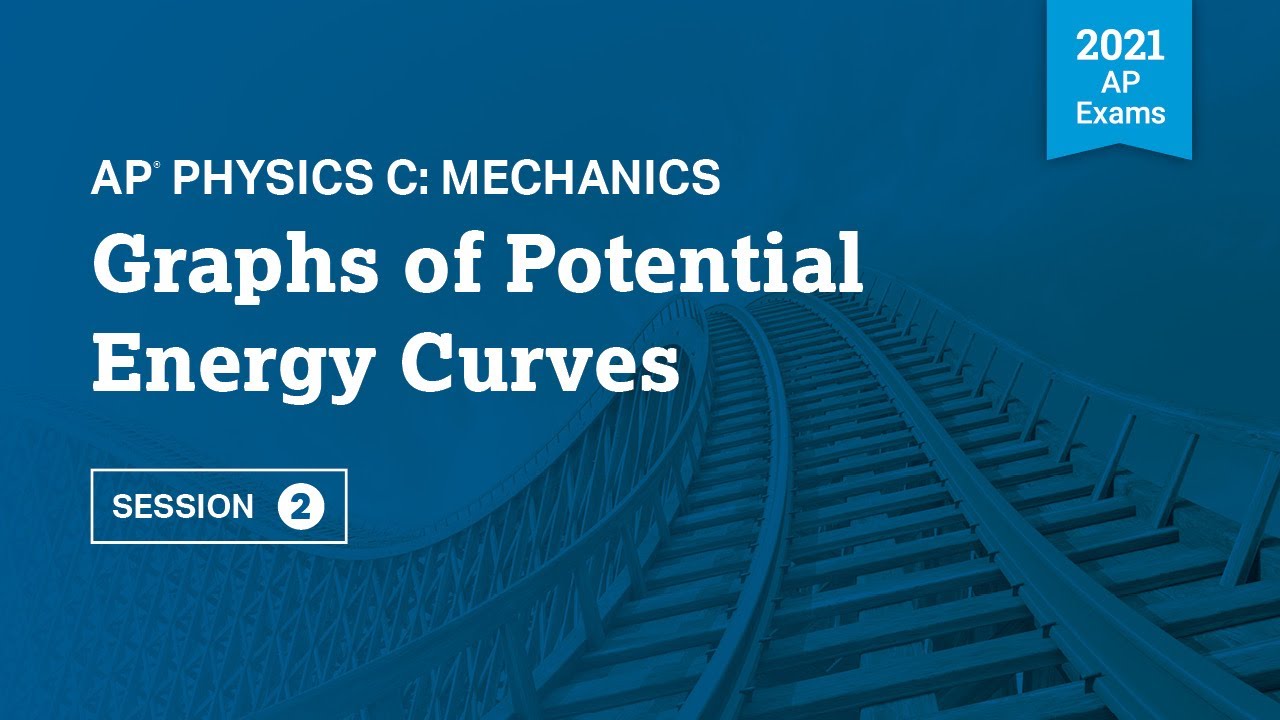
2021 Live Review 2 | AP Physics C: Mechanics | Graphs of Potential Energy Curves
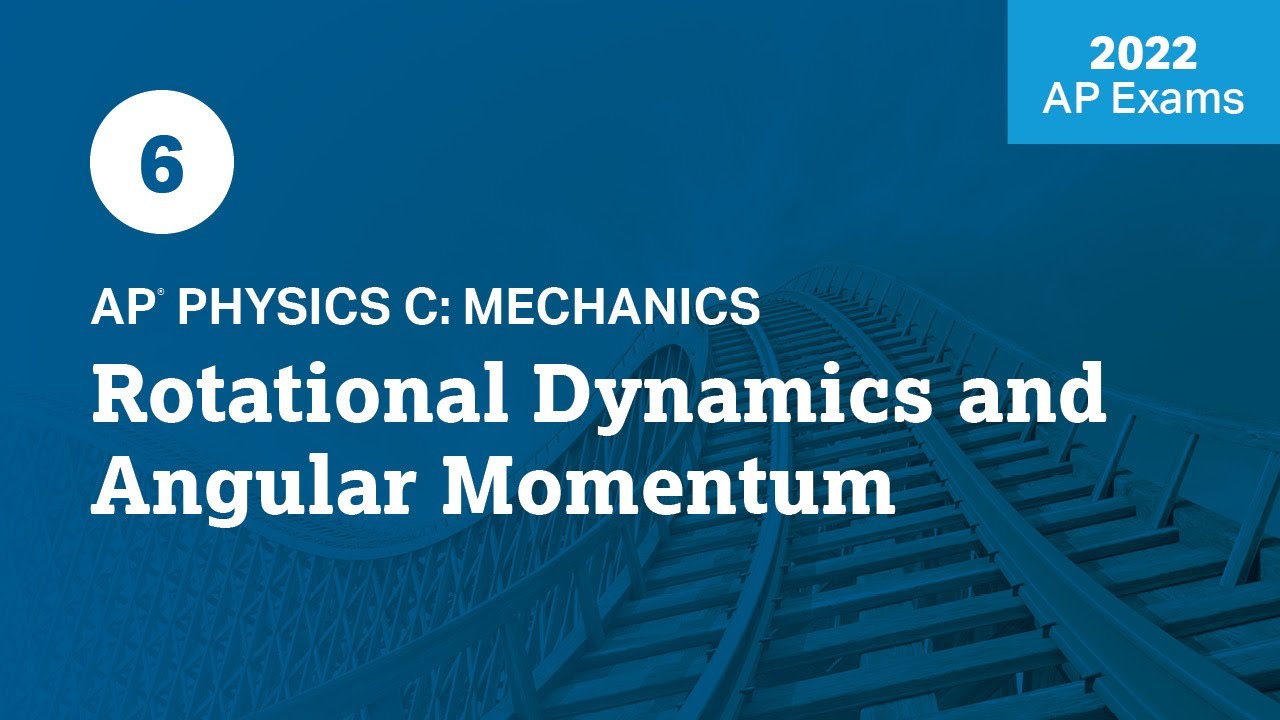
2022 Live Review 6 | AP Physics C: Mechanics | Rotational Dynamics and Angular Momentum
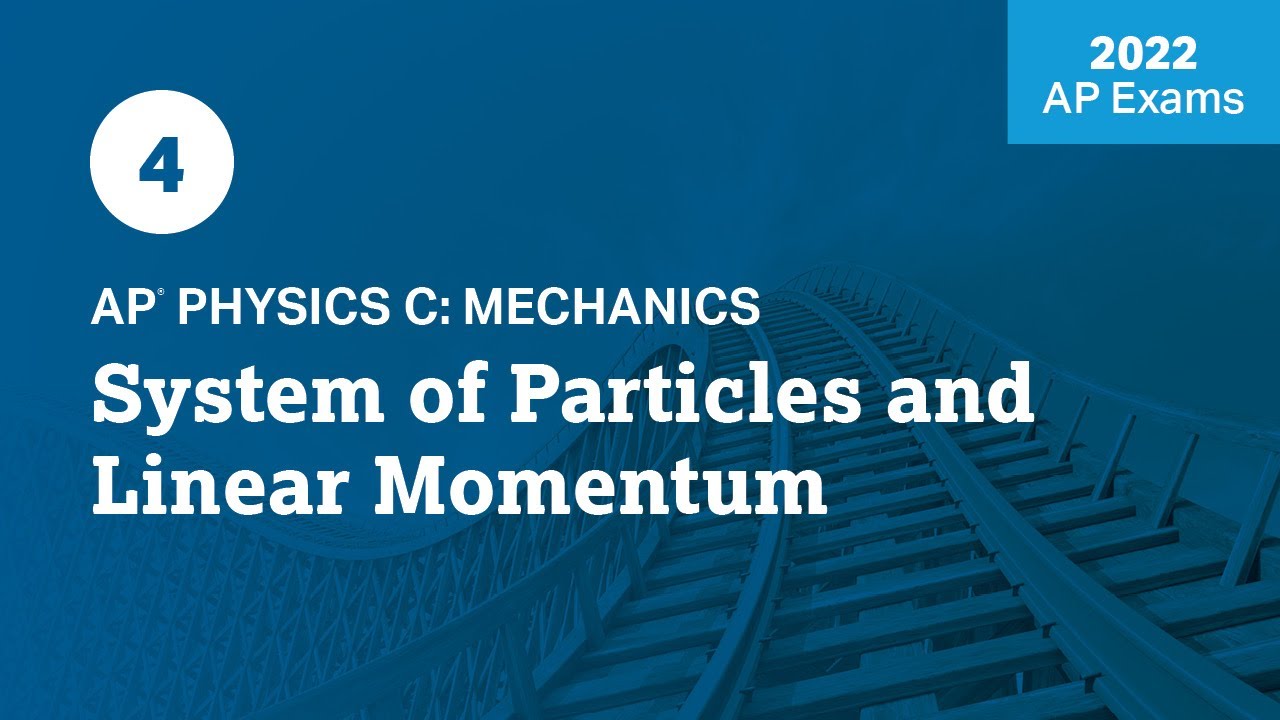
2022 Live Review 4 | AP Physics C: Mechanics | System of Particles and Linear Momentum

6 | FRQ | Practice Sessions | AP Physics C: Mechanics
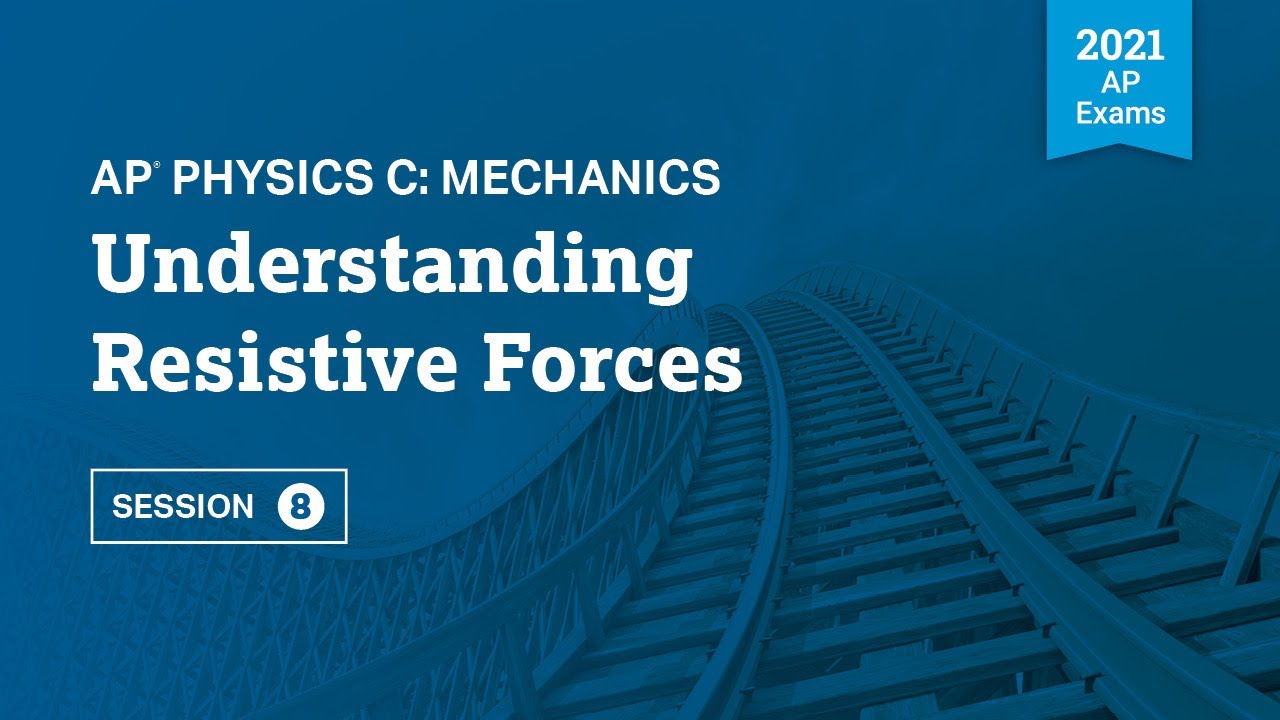
2021 Live Review 8 | AP Physics C: Mechanics | Understanding Resistive Forces
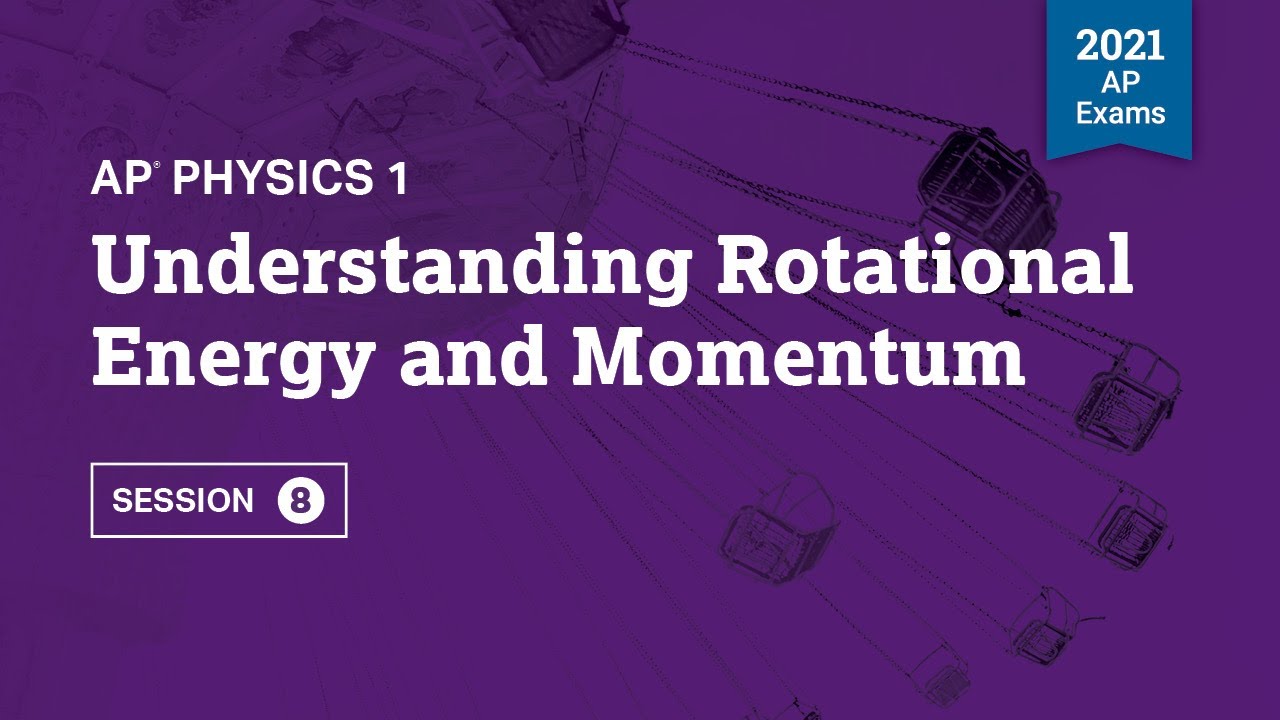
2021 Live Review 8 | AP Physics 1 | Understanding Rotational Energy and Momentum
5.0 / 5 (0 votes)
Thanks for rating: